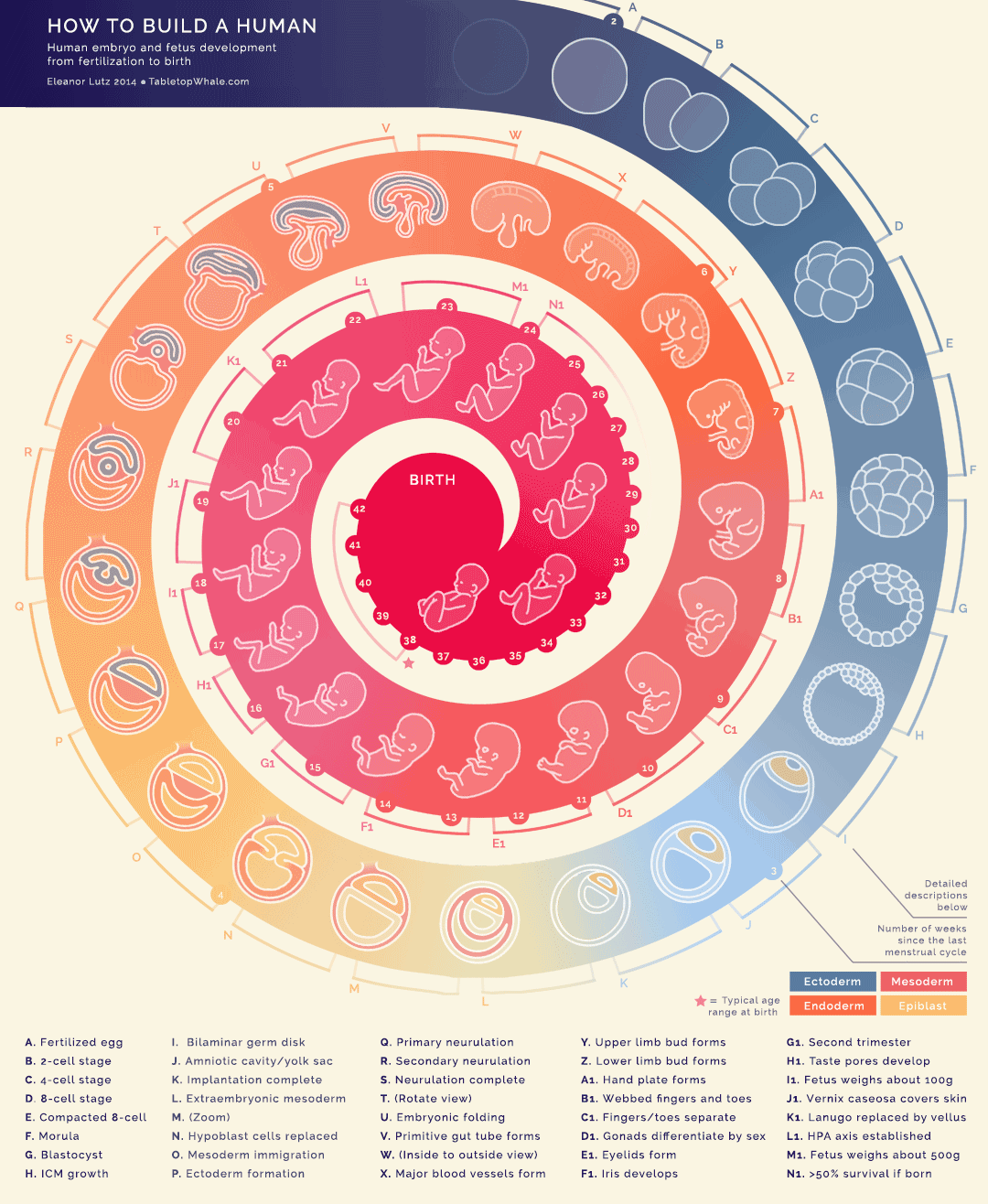The fact that science can press the pause button on embryo development and unpause it later isn’t just amazing, it’s what makes embryo adoption a reality for couples looking for IVF alternatives. The key to understanding how this process works is understanding how embryos develop in the first place. Check out this beautiful infographic created by Eleanor Lutz:
This mesmerizing spiral shows the development of a baby, from fertilized egg through birth. When doctors create embryos in a lab to prepare for the in vitro fertilization process, they artificially fertilize an egg to start the development process (section A in the infographic above). While it can vary from lab to lab, most IVF clinics will freeze the embryos at the blastocyst stage (section G in the infographic above), or about the 5th day of development. The baby will be about 200 cells in total at this stage; in comparison, your body is currently made up of over 37 trillion cells.
Doctors have found that by the 5th day of development, they can tell if an embryo is going to be a good candidate for IVF transfer because it will have surpassed potential developmental hurdles encountered in the very early stages of development. That allows doctors to give IVF patients the highest success rate possible. This is also when they will freeze the remaining embryos, to be used for future IVF transfers or potentially to be donated for adoption. These embryos can safely be thawed and transferred up to ten years later, as development will simply continue as normal once they have been transferred.
This is an incredible process, and more couples are taking advantage of it to create their own families from the 600,000 frozen embryos currently in storage in the United States. If you’d like to learn more about the embryo adoption process, visit www.embryoadoption.org.
(Please Read Our Comment Policy Before Commenting)


Recent Comments